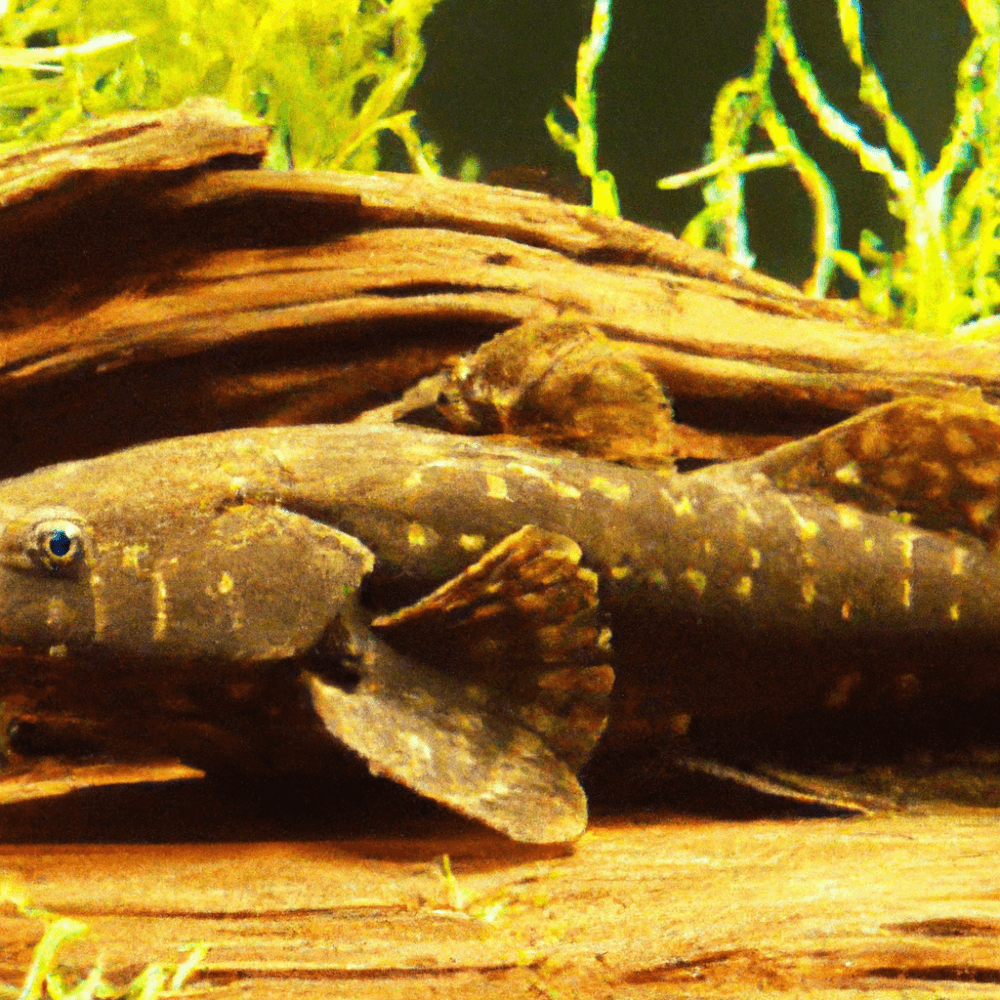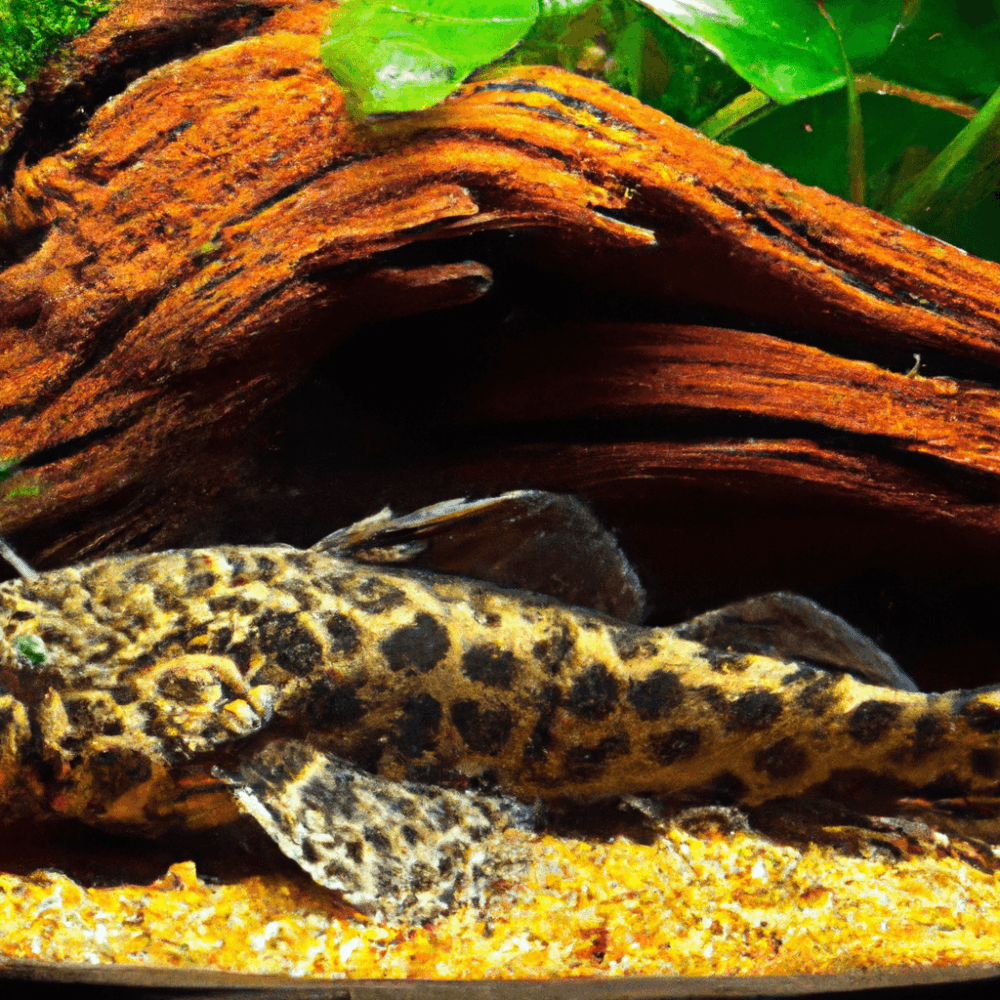If you’re a proud owner of a Bristlenose Pleco, you may have pondered whether or not it needs driftwood in its tank. Driftwood has long been a popular addition to aquariums, known for its natural aesthetic appeal. But is it necessary for the well-being of your Bristlenose Pleco? In this article, we’ll explore the importance of driftwood for these unique creatures and shed light on whether it’s a must-have or merely a nice-to-have in their habitat. So, let’s dive in and find out if your Bristlenose Pleco truly needs driftwood!
Introduction
If you are a proud owner of a Bristlenose Pleco, you may have heard about the importance of driftwood in their tank. Driftwood is not just a decorative piece; it serves several essential functions for the well-being of your Bristlenose Pleco. In this article, we will explore the natural habitat of the Bristlenose Pleco, the importance of driftwood for their health and behavior, different types of driftwood suitable for them, how to prepare driftwood for their tank, and alternative options if driftwood is not available. So, let’s dive into the world of the Bristlenose Pleco and the significance of driftwood!
Natural Habitat of Bristlenose Pleco
The Bristlenose Pleco, scientifically known as Ancistrus spp., is native to the Amazon River Basin in South America. This vast river system and its tributaries provide these amazing bottom-dwelling fish with a diverse and dynamic habitat. The Amazon River Basin is rich in plant life, and fallen trees and branches are a common sight along its banks. Driftwood is a natural part of their environment, and Bristlenose Plecos have adapted to utilize it in various ways.

Water Conditions
To understand the importance of driftwood for Bristlenose Plecos, it is crucial to consider their preferred water conditions. These fish thrive in soft and slightly acidic water with a pH range of 6.5 to 7.5. The presence of tannins from decomposing organic matter, such as driftwood, lowers the pH and mimics their natural habitat. Additionally, Bristlenose Plecos prefer water temperature between 72°F and 80°F (22°C and 27°C). Creating an environment that closely resembles their natural habitat is vital for their overall well-being.
Importance of Driftwood for Bristlenose Pleco
Digestive System
One of the primary reasons why Bristlenose Plecos need driftwood is because it aids in their digestion. Driftwood contains lignin, a complex organic compound that is resistant to breakdown by most organisms. The Bristlenose Pleco has evolved a specialized digestive system equipped to extract nutrients from this tough material. The wood fibers help in the mechanical breakdown of food, ensuring that the Pleco can fully utilize the nutrients from their diet.
Teeth Health
Just like humans, the Bristlenose Pleco also requires dental care. The constant chewing on driftwood helps to naturally trim down their ever-growing teeth. Without suitable chewing material, their teeth can become overgrown, leading to discomfort and difficulty in feeding. Providing them with driftwood ensures their teeth stay healthy and properly maintained.
Hiding and Breeding
Driftwood provides essential shelter for Bristlenose Plecos. Given their nocturnal nature, these fish often seek out secluded spots during the day to rest and hide. Driftwood offers natural caves and crevices where they can retreat and feel secure. Additionally, Bristlenose Plecos use driftwood for breeding purposes. The males often claim territories near or within the hollows of the wood, creating their ideal spawning sites.
Algae Consumption
Bristlenose Plecos are excellent algae eaters and can be extremely beneficial for keeping tanks clean. Driftwood provides a surface where beneficial algae can grow, serving as a natural food source for the Plecos. The rough texture of the wood promotes the growth of algae, which the Plecos readily consume. This not only helps to control excessive algae in the tank but also provides them with a nutritious supplement to their diet.

Types of Driftwood for Bristlenose Pleco
When selecting driftwood for your Bristlenose Pleco tank, it is essential to choose the right kind of wood. Here are a few popular options that are safe and suitable for these fish:
Manzanita
Manzanita driftwood is known for its striking appearance and durability. It has unique twists and turns, creating interesting shapes and textures in the tank. Bristlenose Plecos enjoy gnawing on the dense branches of Manzanita wood and find it especially beneficial for their dental health.
Mopani
Mopani driftwood is another popular choice for Bristlenose Plecos. It is known for its rich dark coloration and intricate patterns. Mopani wood releases tannins into the water, providing a natural environment similar to the Plecos’ native habitat. This type of driftwood is long-lasting and serves as an excellent hiding spot for these fish.
Cholla
Cholla wood is derived from the skeleton of the Cholla cactus and is a fantastic addition to Bristlenose Pleco tanks. It has a porous texture that promotes the growth of beneficial bacteria and algae. The Plecos also enjoy grazing on the soft parts of the Cholla wood, providing them with additional nutrients.
Malaysian
Malaysian driftwood is known for its intricate root-like structures. It creates a captivating and natural-looking environment in the tank. Bristlenose Plecos appreciate the textured surfaces of Malaysian driftwood for grazing, breeding, and hiding.
It is crucial to source driftwood from reputable suppliers and avoid using wood collected from outdoor areas, as it may contain harmful substances or pesticides.
Preparing Driftwood for Bristlenose Pleco Tank
Before adding driftwood to your Bristlenose Pleco tank, it is essential to prepare it properly to prevent any potential harm to your fish. Follow these steps to ensure your driftwood is safe and ready for use:
Choosing the Right Size
Select driftwood pieces that are proportional to the size of your tank. Oversized or undersized driftwood can create imbalances and hinder the movement of your Plecos. Aim for driftwood pieces that provide sufficient hiding spots and still leave ample swimming space for your fish.
Cleaning and Sterilizing
Begin by cleaning the driftwood thoroughly to remove any dirt or debris. You can gently scrub the wood using a soft brush to ensure it is free from any contaminants. Avoid using soap or any chemical cleaning agents, as they can be harmful to your fish. After cleaning, sterilize the wood by soaking it in a bleach solution (1 part bleach to 20 parts water) for 24-48 hours. Rinse the driftwood thoroughly to remove any remaining bleach.
Soaking or Boiling
The next step is to either soak or boil the driftwood. Soaking the wood in water for a few weeks helps to leach out tannins and reduce their effect on the water parameters. Alternatively, boiling the driftwood for an hour or two can expedite the process. Boiling also aids in killing any potential pests or pathogens that might be present in the wood.
Adding to the Aquarium
Once the driftwood has been thoroughly cleaned, sterilized, and soaked or boiled, it is ready to be added to the aquarium. Carefully position the driftwood, ensuring it is secure and does not pose any risk of toppling over. Monitor your water parameters during the initial weeks to ensure they remain within the appropriate range for your Bristlenose Plecos.
Driftwood Alternatives for Bristlenose Pleco
If driftwood is not readily available or suitable for your Bristlenose Pleco tank, there are several alternative options to consider:
Caves and Tubes
Ceramic caves and tubes designed specifically for Plecos can serve as alternative hiding spots in the absence of driftwood. Make sure the openings are large enough for your Plecos to enter comfortably. These artificial structures can mimic natural hiding places and provide a sense of security for your fish.
Ceramic Decorations
Ceramic decorations with textured surfaces can provide a similar grazing experience for your Plecos as driftwood does. Opt for decorations with small crevices or rough areas that allow algae to grow and provide an additional food source.
Coconut Shells
Coconut shells, when appropriately cleaned and prepared, can offer shelter and hiding spots for Bristlenose Plecos. They mimic the natural cavities found in driftwood and provide a similar environment for the fish.
Signs of Driftwood Decay or Contamination
While driftwood can be beneficial for your Bristlenose Plecos, it is essential to monitor its condition to ensure it does not pose any risks. Keep an eye out for the following signs of driftwood decay or contamination:
Visible Molds or Fungus
If you notice any growth of molds or fungus on the surface of the driftwood, it may indicate decay. Promptly remove the affected driftwood to prevent any potential harm to your Plecos.
Unusual Odor
A strong and unpleasant odor emanating from the driftwood can be a sign of decomposition. It is crucial to remove the decayed wood immediately to maintain the water quality and prevent any negative effects on your fish.
Unhealthy Behavior
If your Bristlenose Plecos show signs of distress, such as loss of appetite, abnormal swimming patterns, or lethargy, the driftwood may be causing issues. Monitor their behavior closely and consider removing the driftwood if their health does not improve.
Maintaining Driftwood in Bristlenose Pleco Tank
To ensure the longevity and benefits of driftwood in your Bristlenose Pleco tank, it is important to maintain it properly. Here are some key maintenance tips:
Regular Cleaning
Periodically inspect the driftwood for any debris or algae buildup and clean it as necessary. Gently brush off any excess algae using a soft brush or sponge, being careful not to damage the wood. Regular cleaning prevents the accumulation of waste and promotes a clean and healthy environment for your Plecos.
Monitoring pH Levels
As driftwood releases tannins into the water, it can slightly lower the pH levels. Monitor the pH of your tank regularly using a reliable test kit and take appropriate measures, such as partial water changes or adding pH buffers, to maintain the desired water parameters for your Bristlenose Plecos.
Replacing Old Driftwood
Over time, driftwood may deteriorate or lose its structural integrity. If you notice any signs of decay, instability, or the Plecos no longer utilizing the driftwood, it may be time to replace it. Always ensure a smooth transition by introducing new driftwood gradually and monitoring any changes in water parameters.
Conclusion
In conclusion, driftwood plays a vital role in the overall health and well-being of Bristlenose Plecos. It aids in their digestion, dental care, breeding, and provides hiding spots while mimicking their natural habitat. By choosing the right kind of driftwood, preparing it properly, and maintaining it effectively, you can create an optimal environment for your Bristlenose Plecos. However, if driftwood is not available, alternative options such as ceramic decorations or coconut shells can fulfill some of the Plecos’ needs. Remember to regularly monitor the condition of driftwood and take appropriate actions to ensure the safety and comfort of your beloved Plecos. With proper care and the presence of driftwood or suitable alternatives, your Bristlenose Plecos will thrive in a healthy and enriching environment.